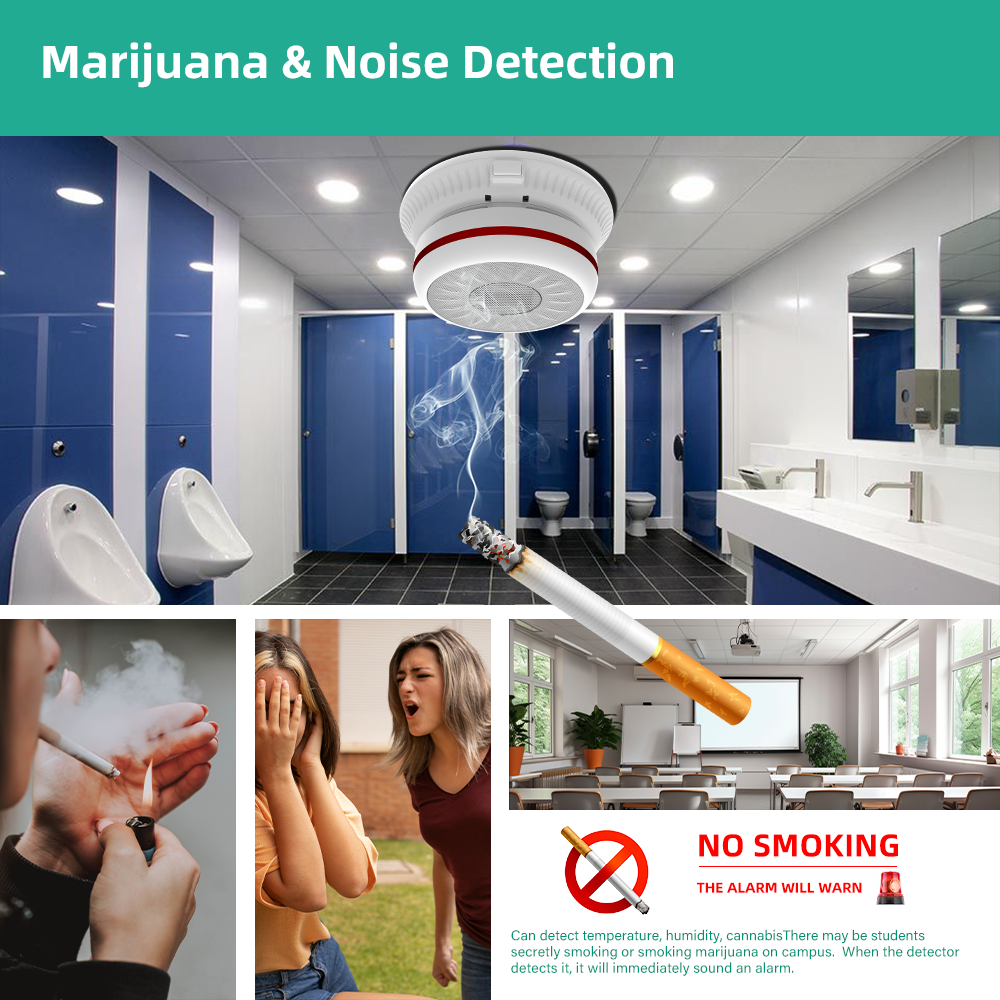In American schools, a hidden epidemic unfolds every three minutes: a student is caught vaping. Public health experts label the teen vaping epidemic a complete crisis, with the CDC noting that 40 percent of high schoolers and 20% of middle schoolers have had a go at electronic cigarettes. The majority of them (99 percent) contain nicotine, an addictive chemical that rewires the brain in its developing stages and is often used to facilitate smoking cigarettes. Teachers, parents and administrators are under increasing pressure to take action. Vape detectors are an advanced gadget that has become a campus must-have. Triton, and 3D Sense are the two the most advanced vape detectors schools can make use of. They can do more than simply create an alarm.
How do Vape Detectors Function: Precision, Without intrusion
Modern vape smoke sensors such as the Triton ULTRA Smart Safety sensor don’t rely upon cameras or audio recordings to ensure complete confidentiality, but still delivering useful intelligence. It uses particulate sensors that analyze the air in real-time. The device sends alerts to staff via email or text whenever vape aerosols and masking agents, like heavy perfumes, are identified. False-positives remain very low. Administrators can rest assured that all notifications will require immediate attention.

One unit covers the entire bathroom in the room, locker room or hallway, making installation affordable. In the first five weeks after installing, Triton customers typically report an increase in vaping incidents. Why? Data-driven deterrence. The Triton Cloud Dashboard highlights “hotspots”, where vaping is the most popular and when. Principals can direct hall monitors and security personnel where they’re needed.
Beyond Detection: Visualization of Occupancy and Loitering Control
What sets Triton apart from basic vape detectors is its patent-pending occupancy visualization technology. In the absence of recording images or sounds or recording sound, the ULTRA sensor tracks people count and dwell time in sensitive areas. Administrators can view color-coded heat maps showing the times when bathrooms are transformed into social hubs, which are the most popular locations to smoke and also the frequent contact with others that can cause respiratory diseases.
Stanford Medicine’s research demonstrates the importance of this issue: Students who vape have a five-fold higher risk of contracting COVID-19. Vape detectors can improve the air quality in schools by reducing the number of people in a congregation. This can reduce the risk of transmission of all airborne pathogens. After the pandemic this device has become essential due to their dual benefits.
Transforming data into discipline and dialog
The numbers tell a compelling tale. Triton Reports module collates quantitative information about the incident’s timestamps. Locations, and frequency changes. This data is provided to school boards. Parents groups. Even the students themselves. Skepticism begins to fade when an institution reports a 60% decrease in detections since detectors were put in place. Parents see commitment; students accept the consequences.
Education professionals can make a bigger impact by announcing the presence of smoking detectors for vapes as early as the first day. 3D Sense, for example advertises itself as a preventative. The guidance materials recommend that students be aware that the air itself is monitoring them. The next step: The social impact associated with triggering an alarm often proves to be more powerful than the lecture.
A Multi-Front Strategy Schools Can’t Ignore
Vape detectors aren’t the only instrument that can stop vaping. They are a part of a complete strategy.
Monitoring – Real-time alerts are able to detect incidents in the moment they occur.
Education – Research based on evidence-based practices fuels anti-vaping curricula.
Dissuasion – Signage visible and the consequences that are known to change behaviour.
Discipline – Hotspot data justifies targeted enforcement.
Support Schools can pair detectors with cessation services to help struggling students.
The CDC states that stopping the trend requires “buy-in from parents, educators, and society.” Vape devices provide the missing link: objective, immediate feedback that can turn good intentions into tangible outcomes.
Deployment made simple
The process of registering devices takes only minutes on the Triton Cloud Dashboard. Administrators can add contacts, customize notifications, and set alert thresholds. One demo will show you how intuitive it is. It is possible to schedule a demo and see the live hotspot graphs and maps in the action.
Conclusion
Each puff left unnoticed could be the beginning of a lifelong dependency. Every bathroom that is not properly monitored poses a risk to both health and safety. Vape detectors for schools such as Triton and 3D Sense offer more than surveillance they deliver intelligence, deterrence, and evidence of advancement. The schools that install them don’t simply respond to the issue of vaping but they also take control of the issue.
These tools can turn naive fears into concrete victories. With a single sensor for every room and privacy-safe occupancy insight, they can transform vague concerns into concrete ones. In a time where 40% of high school students have already tried it, and middle-school numbers are growing every day, putting off the decision for longer is sensible. The air that you breathe has evidence, make sure you’re the first to be aware of what is being said.